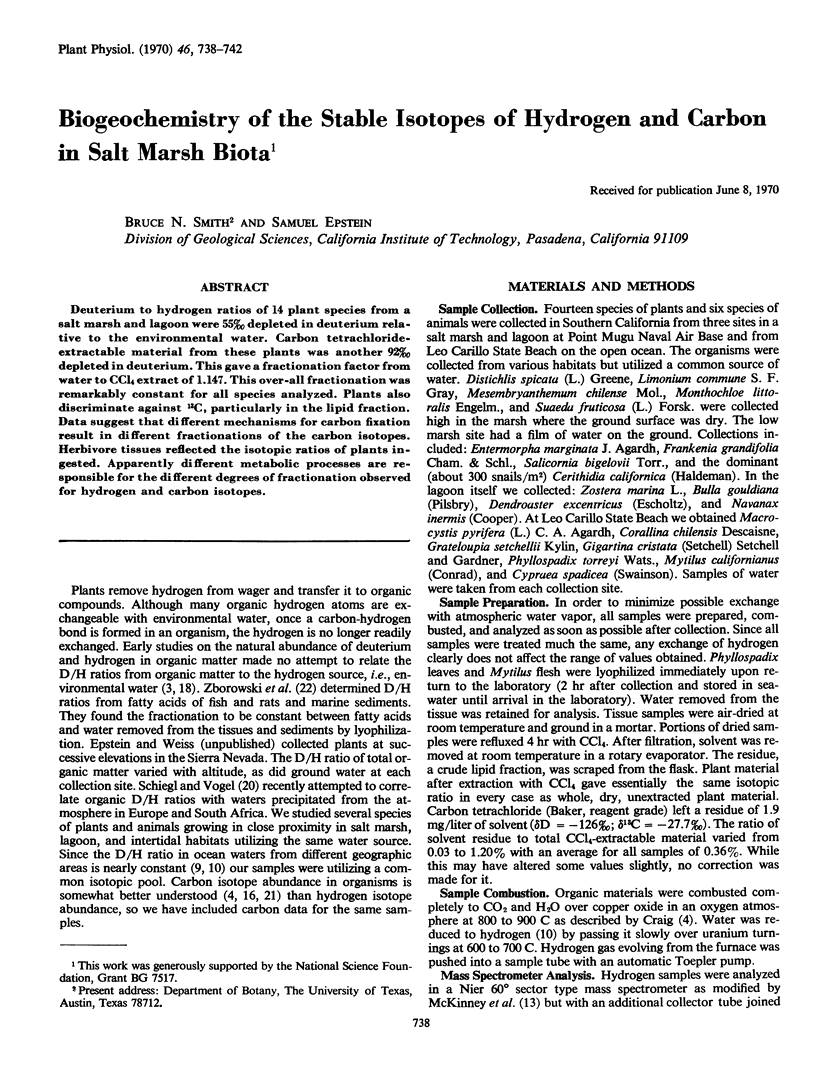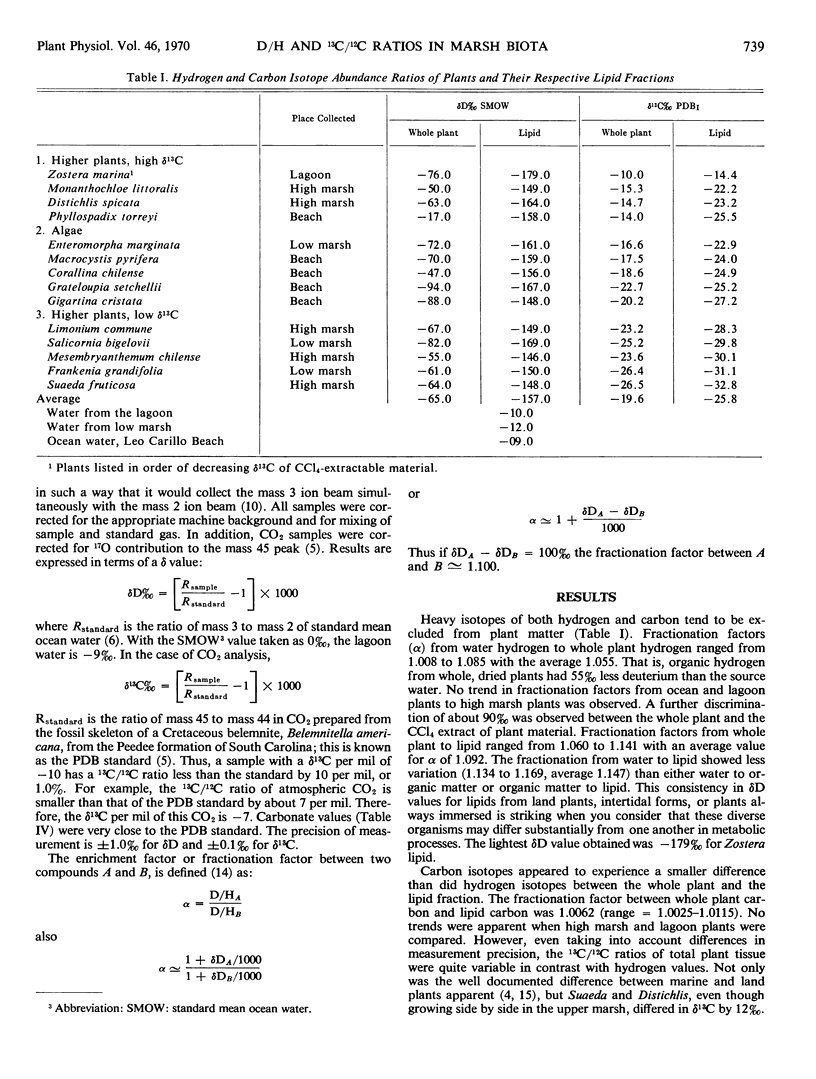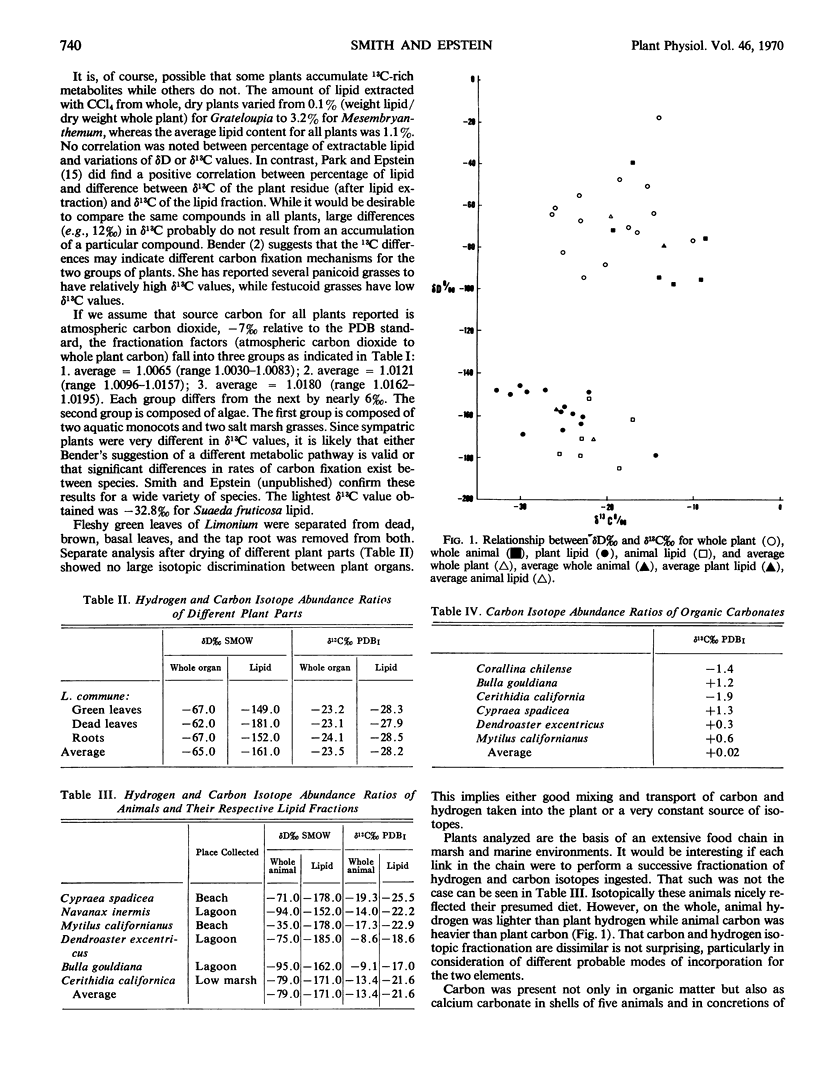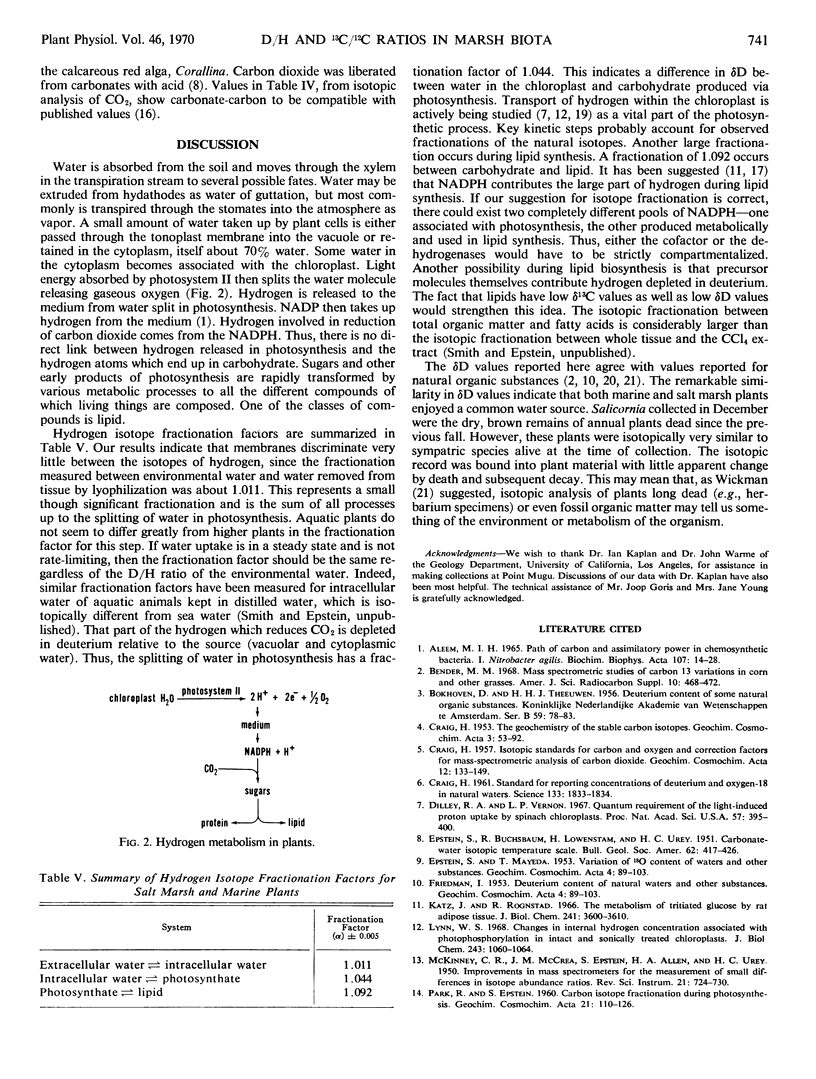Abstract
Deuterium to hydrogen ratios of 14 plant species from a salt marsh and lagoon were 55‰ depleted in deuterium relative to the environmental water. Carbon tetrachloride-extractable material from these plants was another 92‰ depleted in deuterium. This gave a fractionation factor from water to CCl4 extract of 1.147. This over-all fractionation was remarkably constant for all species analyzed. Plants also discriminate against 13C, particularly in the lipid fraction. Data suggest that different mechanisms for carbon fixation result in different fractionations of the carbon isotopes. Herbivore tissues reflected the isotopic ratios of plants ingested. Apparently different metabolic processes are responsible for the different degrees of fractionation observed for hydrogen and carbon isotopes.
Full text
PDF




Selected References
These references are in PubMed. This may not be the complete list of references from this article.
- Aleem M. I. Path of carbon and assimilatory power in chemosynthetic bacteria. I. Nitrobacter agilis. Biochim Biophys Acta. 1965 Aug 24;107(1):14–28. doi: 10.1016/0304-4165(65)90384-3. [DOI] [PubMed] [Google Scholar]
- Craig H. Standard for Reporting Concentrations of Deuterium and Oxygen-18 in Natural Waters. Science. 1961 Jun 9;133(3467):1833–1834. doi: 10.1126/science.133.3467.1833. [DOI] [PubMed] [Google Scholar]
- Dilley R. A., Vernon L. P. Quantum requirement of the light-induced proton uptake by spinach chloroplasts. Proc Natl Acad Sci U S A. 1967 Feb;57(2):395–400. doi: 10.1073/pnas.57.2.395. [DOI] [PMC free article] [PubMed] [Google Scholar]
- Katz J., Rognstad R. The metabolism of tritiated glucose by rat adipose tissue. J Biol Chem. 1966 Aug 10;241(15):3600–3610. [PubMed] [Google Scholar]
- Lynn W. S. Changes in internal hydrogen ion concentration associated with photophosphorylation in intact and sonically treated chloroplasts. J Biol Chem. 1968 Mar 10;243(5):1060–1064. [PubMed] [Google Scholar]
- McKINNEY C. R., McCREA J. M., EPSTEIN S., ALLEN H. A., UREY H. C. Improvements in mass spectrometers for the measurement of small differences in isotope abundance ratios. Rev Sci Instrum. 1950 Aug;21(8):724–730. doi: 10.1063/1.1745698. [DOI] [PubMed] [Google Scholar]
- Ragland T. E., Hackett D. P. Radioactive Tracer Studies of the Metabolic Fates of Intracellularly Generated NADH and NADPH in Higher Plant Tissues. Plant Physiol. 1965 Nov;40(6):1191–1197. doi: 10.1104/pp.40.6.1191. [DOI] [PMC free article] [PubMed] [Google Scholar]
- Rumberg B., Siggel U. pH changes in the inner phase of the thylakoids during photosynthesis. Naturwissenschaften. 1969 Mar;56(3):130–132. doi: 10.1007/BF00601025. [DOI] [PubMed] [Google Scholar]
- Zborowski G., Ponticorvo L., Rittenberg D. On the constancy of deuterium fractionation in the biosynthesis of fatty acids since the miocene period. Proc Natl Acad Sci U S A. 1967 Oct;58(4):1660–1663. doi: 10.1073/pnas.58.4.1660. [DOI] [PMC free article] [PubMed] [Google Scholar]


